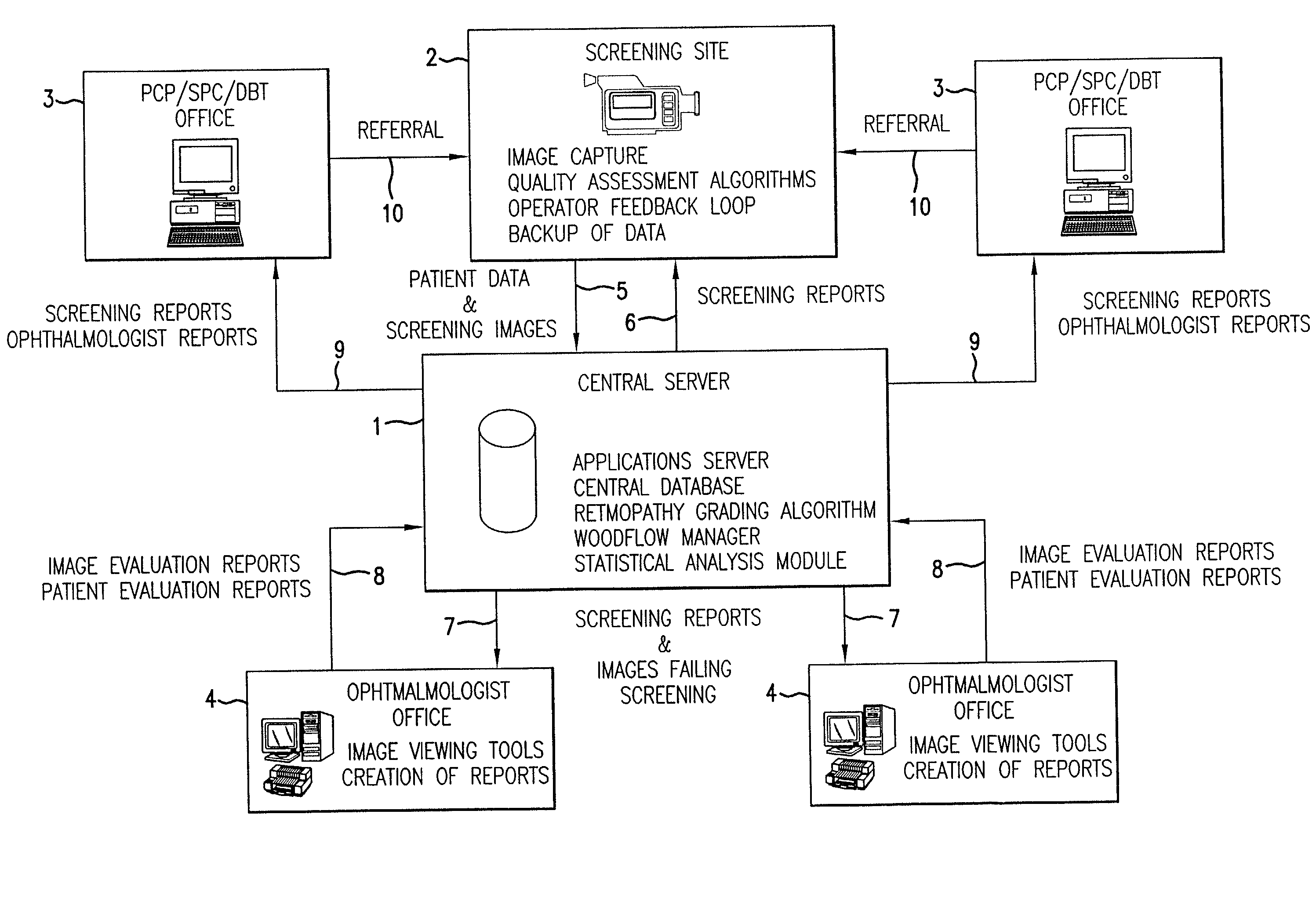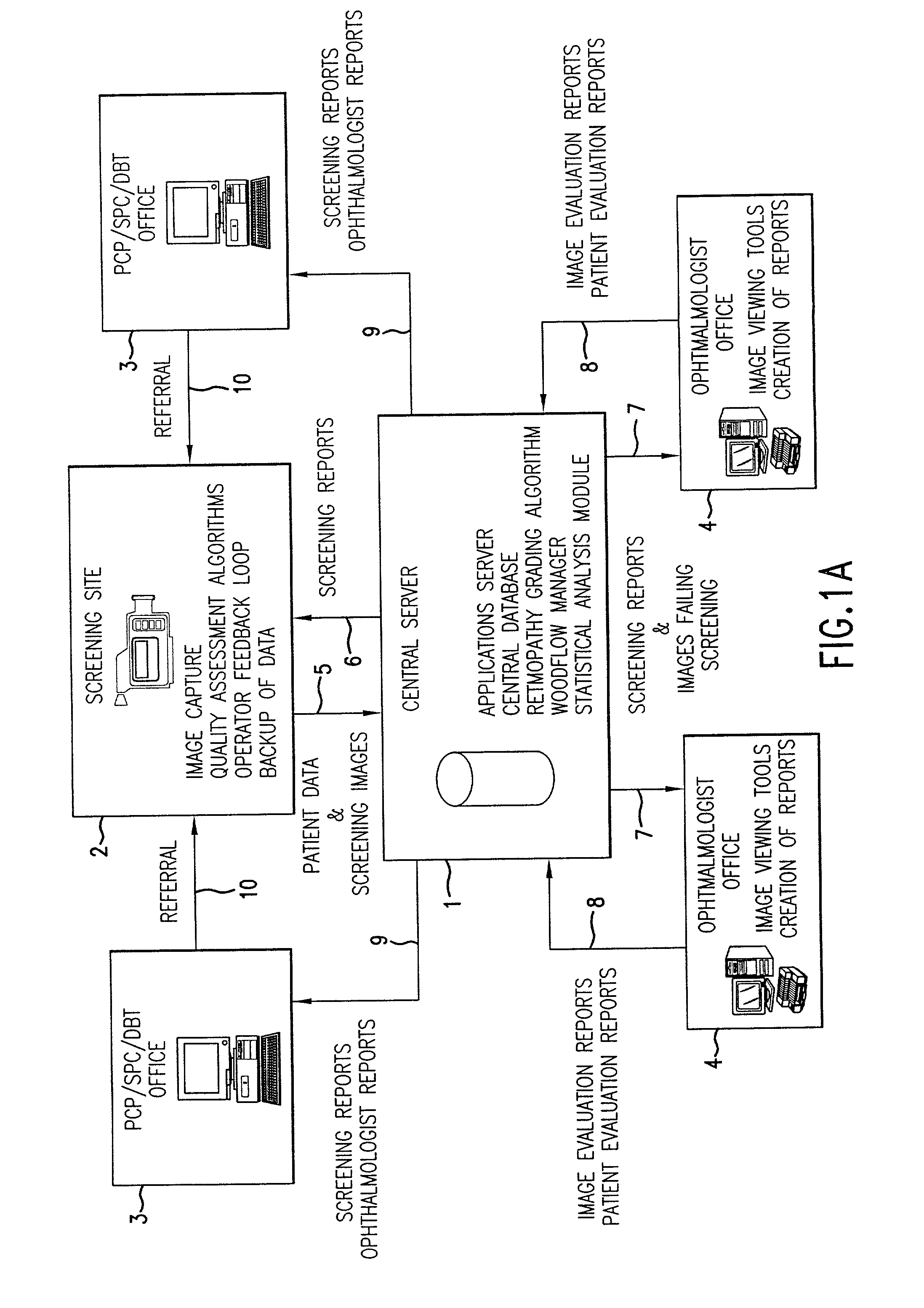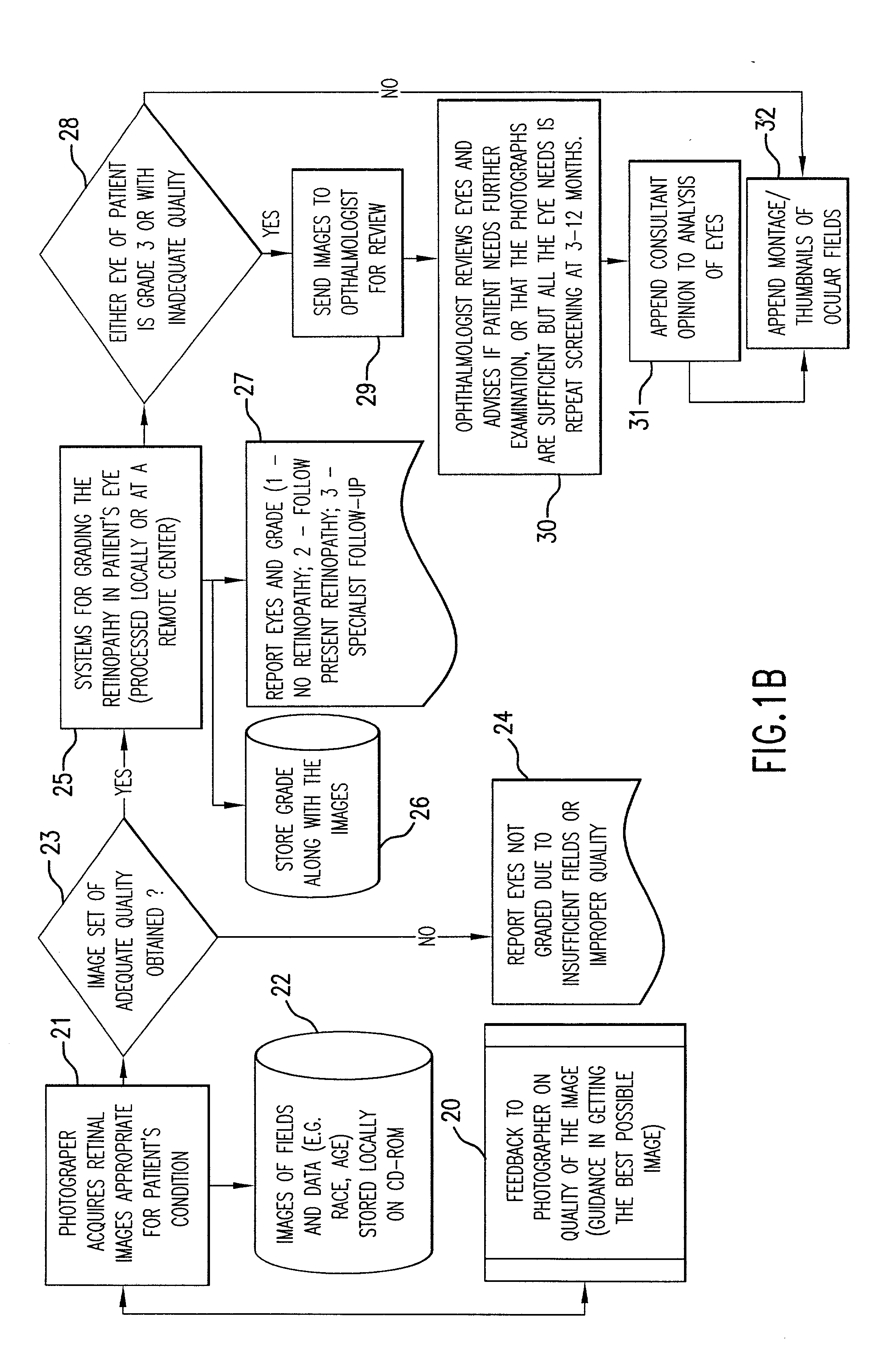Systems and methods for tele-ophthalmology
a technology of ophthalmology and telemedicine, applied in the field of teleophthalmology, can solve the problems of unrivaled resources for population studies of retinal diseases, the need to refer to expensive specialists only for those with significant retinopathy, etc., and achieve the effects of reducing the risk of ocular diseas
- Summary
- Abstract
- Description
- Claims
- Application Information
AI Technical Summary
Benefits of technology
Problems solved by technology
Method used
Image
Examples
Embodiment Construction
[0060] Preferred general embodiments of the systems and methods of the ophthalmology service system (referred to herein as the "OSS") of the present invention are first described; followed in subsequent sections by descriptions of the principle preferred components of the general embodiments.
[0061] 5.1. Systems and Methods
[0062] As illustrated in FIG. 1A, the overall OSS architecture includes central server 1, which provides application services (e.g., by an ASP model) including retinopathy grading algorithms, statistical and patient analysis, and workflow management, and which houses a central database containing patient demographic information, all patient image data, screening results, and reports. This server repository is fed information from a network of geographically distributed screening sites 2, which capture ocular images guided by local image quality algorithms and operator feedback and also backup locally patient data. The screening sites are preferably located in prima...
PUM
 Login to View More
Login to View More Abstract
Description
Claims
Application Information
 Login to View More
Login to View More - R&D
- Intellectual Property
- Life Sciences
- Materials
- Tech Scout
- Unparalleled Data Quality
- Higher Quality Content
- 60% Fewer Hallucinations
Browse by: Latest US Patents, China's latest patents, Technical Efficacy Thesaurus, Application Domain, Technology Topic, Popular Technical Reports.
© 2025 PatSnap. All rights reserved.Legal|Privacy policy|Modern Slavery Act Transparency Statement|Sitemap|About US| Contact US: help@patsnap.com



